Vatican City is a 110 acre walled enclave within the City of Rome which has about 840 permanent residents. The Vatican City State was formally recognized as a sovereign state in 1929 making it the smallest internationally recognized State whether measured by geographic size or population. The fortification walls that define the Vatican were constructed under the rule of four popes between the years 847-1644. Although the Vatican now uses the Euro as currency, they do mint Vatican Euro coins which are highly sought after by coin collectors, as are Vatican postage stamps. The sale of stamps and coins is one of the Vatican’s prime methods of generating income for the state. The Pope is the sovereign head of the Vatican City State, having full and absolute executive, administrative and judicial power over Vatican City making him the only absolute monarch in Europe.
Deb & I spent a full day touring the Vatican, which included climbing some 500 stairs to the top of the cupola high above St. Peter’s Basilica which provided a fabulous view of St. Peter’s Square and the surrounding city of Rome. While in the basilica we also met and had a chance to chat with an Arch Bishop and a Cardinal which was a pleasant surprise. The buildings, churches, museums and chapels that make up the Vatican are visually stunning and it is difficult to properly capture their beauty photographically however I trust the images within this post give you a small sense and appreciation of the Vatican.
St. Peter’s Basilica and St. Peter’s Square with the Vaticano Obelisk at its centre form the classical view of the Vatican. The obelisk was carved in Egypt in 30 BC and brought to Rome in 37 AD. It is one of eight Egyptian obelisk’s in Rome and the only one that has not toppled since Roman times.
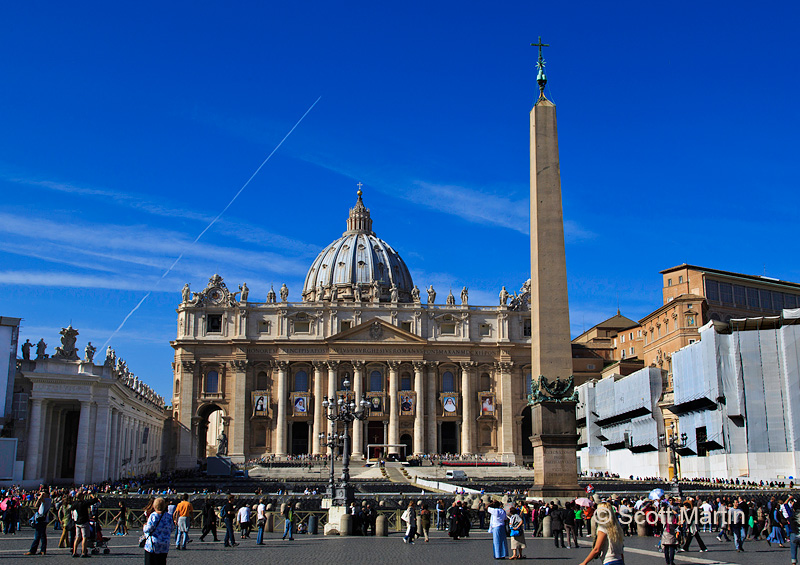
We were at the Vatican the day before the Pope presided over the canonization of seven people and as a result St. Peter’s Square was set up with chairs for the many thousand who would attend the service. The pictures of those being canonized were framed on the face of the basilica, including Kateri Tekakwitha, a Native Canadian who died 300 years ago when she was only 24.
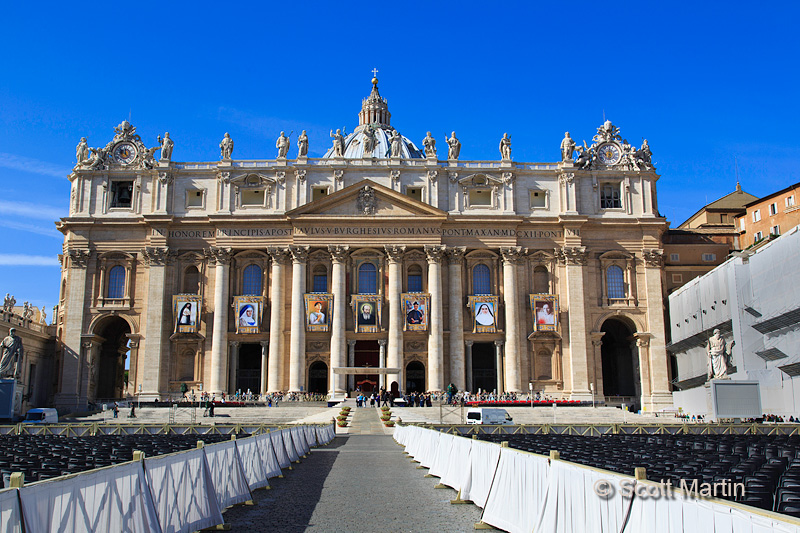
The Pope’s apartment over looks St. Peter’s Square and he addresses people from the top floor, second window from the right.
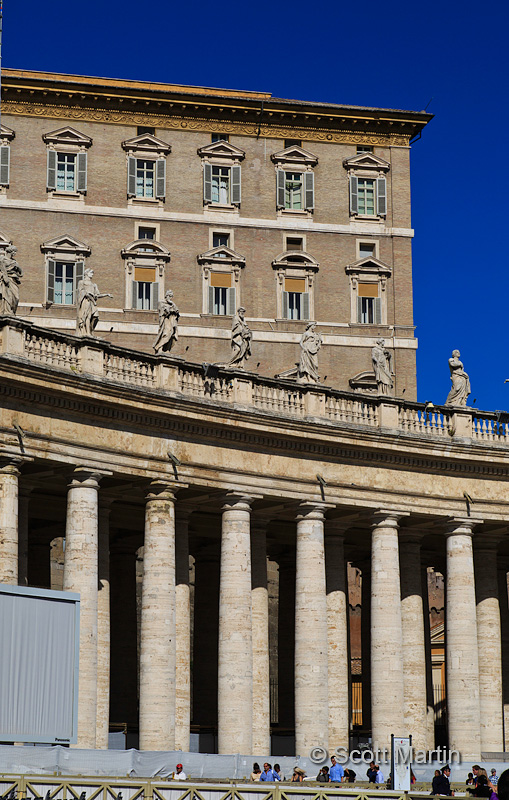
Upon entering St. Peter’s Basilica one is first taken aback by the sheer size of the church. It is so big it is hard to get a proper perspective. The church is designed in the shape of a Greek cross with a large central dome that covers the Papal Altar which can be seen in the back ground of this snap from inside the doors of the church.
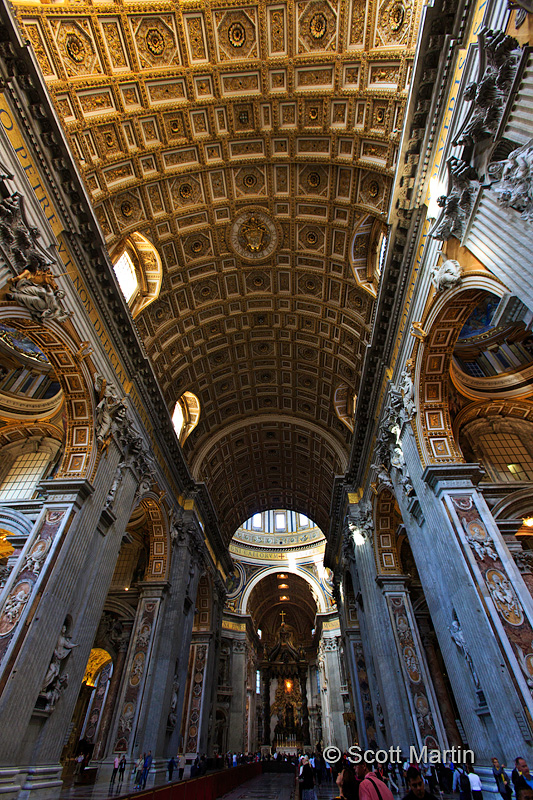
There were a number of architects involved in the design of the basilica which was constructed in the early sixteenth century, most notably Michelangelo who was in his seventies when asked take over the design and construction of the church.
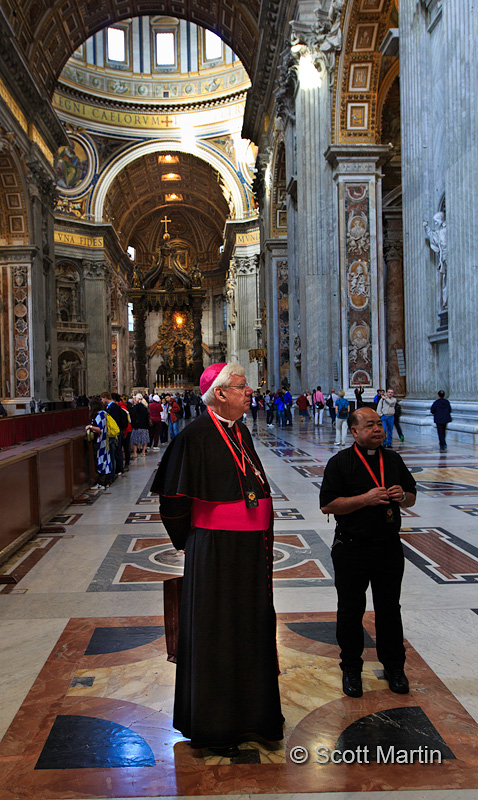
The basilica is probably the largest church building in the world covering almost six acres in area. The Papal Altar, covered by the central dome of the basilica is the central focus of the church. Only the Pope can use this altar, which is constructed over at least two others that preceded it and all covering the burial site of Peter, who was crucified upside down in 64 AD near the Egyptian obelisk that stands in the centre of St. Peter’s Square only a few hundred feet away from the altar.
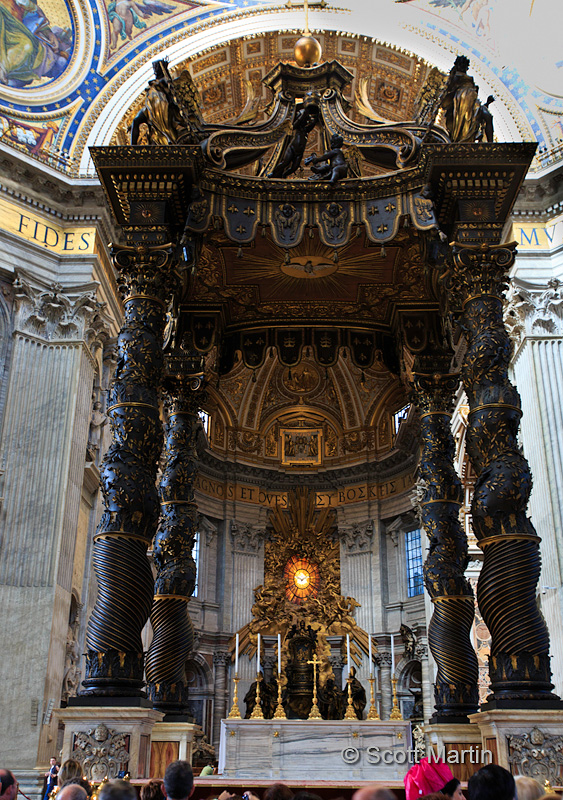
The actual altar is quite simple by Vatican standards consisting of a giant slab of Greek marble but the canopy, or baldacchino, that covers it is the visual centre piece of St. Peter’s Basilica. It is formed from a vast block of black Greek marble, gilded in bronze and standing ninety-five feet above the altar. The Papal Altar was consecrated in 1594 while the canopy was designed by Bernini and built in 1624.
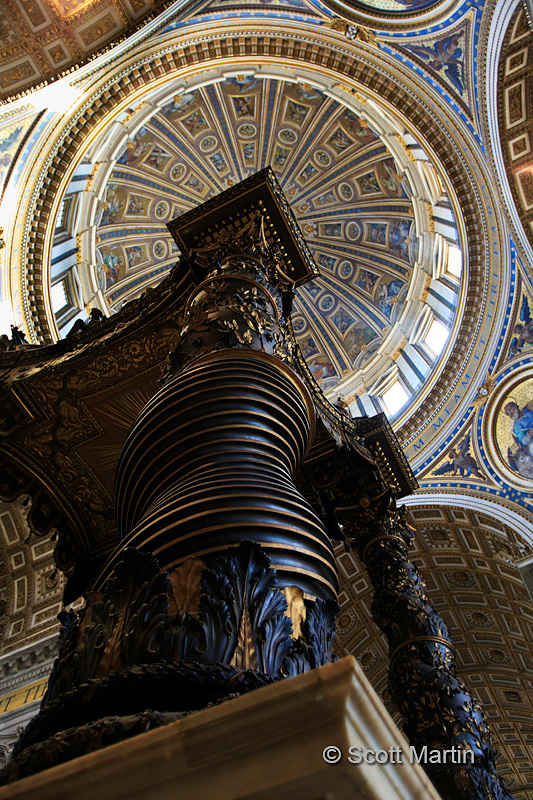
Directly below the Papal Altar is Peter’s tomb which is also below the grade of the main floor of the basilica. When a new Pope takes the historic walk to his investiture it begins at this tomb. Note the people at the sides of this next image to give perspective to the sizes involved.
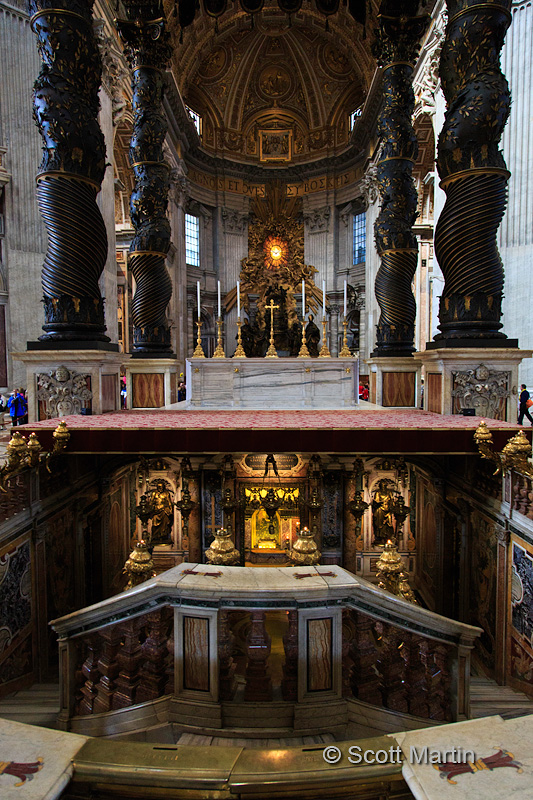
Throughout the basilica there are many altars, confessionals, and works of art, all of which could be greatly expanded upon however for the sake of brevity I will only highlight a few. The first is the Cathedra Petri or Throne of St. Peter which was designed by Bernini and contains a chair that was originally said to be used by Peter himself however was subsequently shown to be from the twelfth century. Still a very old chair! The altar was completed in 1666.
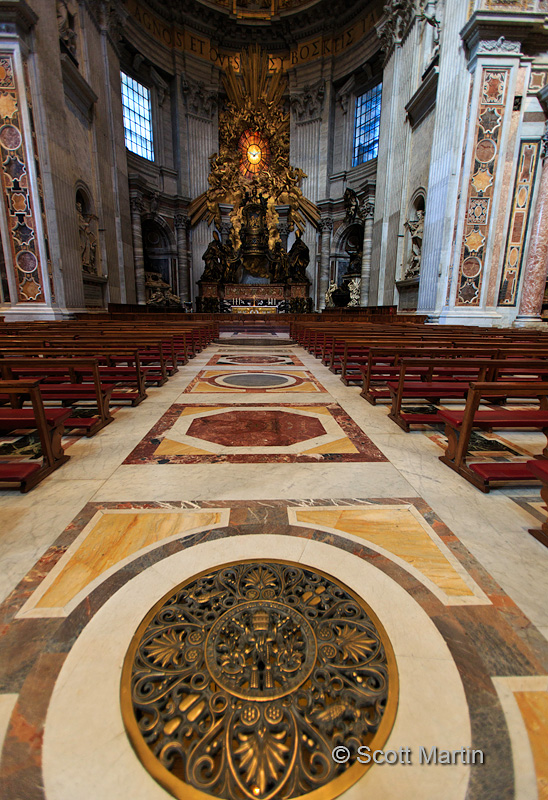
The Altar of Saints Processus & Martinian (two Roman jail guards converted by Peter while awaiting his crucifixion).
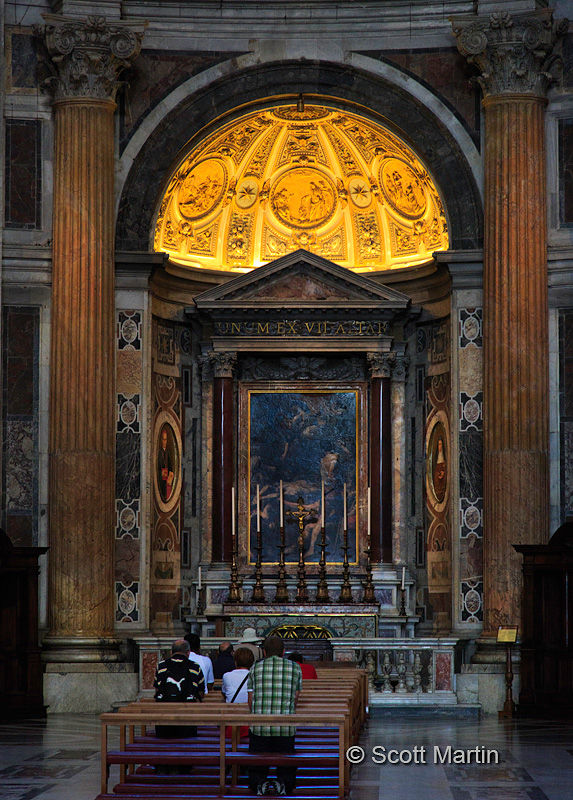
One of many confessionals in the basilica.
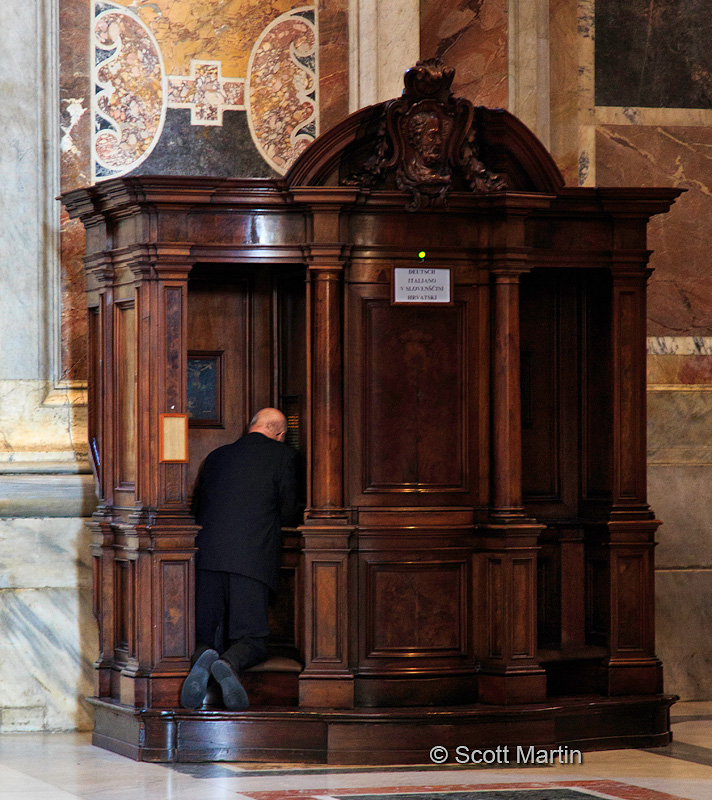
The statue of St. Peter is one of the most popular in the basilica and devotees line up to touch and kiss the right foot of the statue. This is a practice so common that the foot has been completely worn down by the countless people who have attended the statue since it was created in 1296.
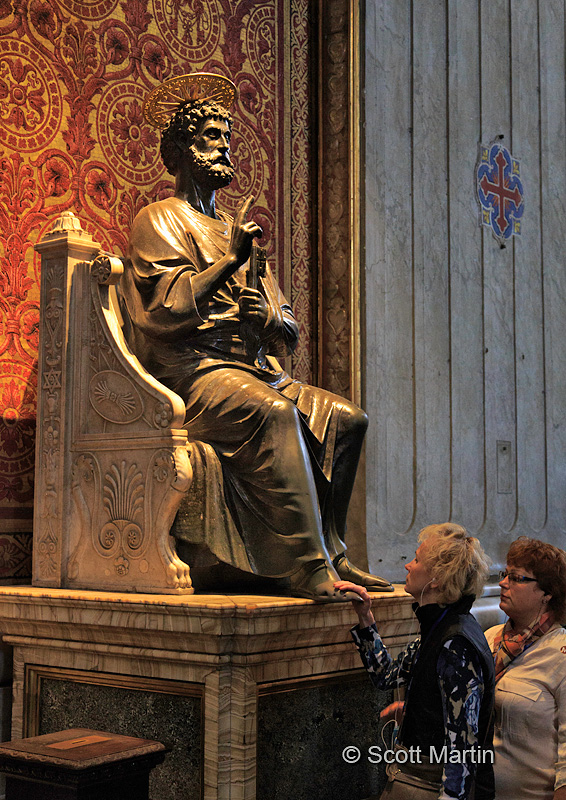
Beneath the Altar of St. Jerome is the resting place of Pope John XXIII who died in 1963. Just last week on September 30th, Pope Francis announced that Pope John XXIII and Pope John Paul II will be declared Saints on April 27, 2014.
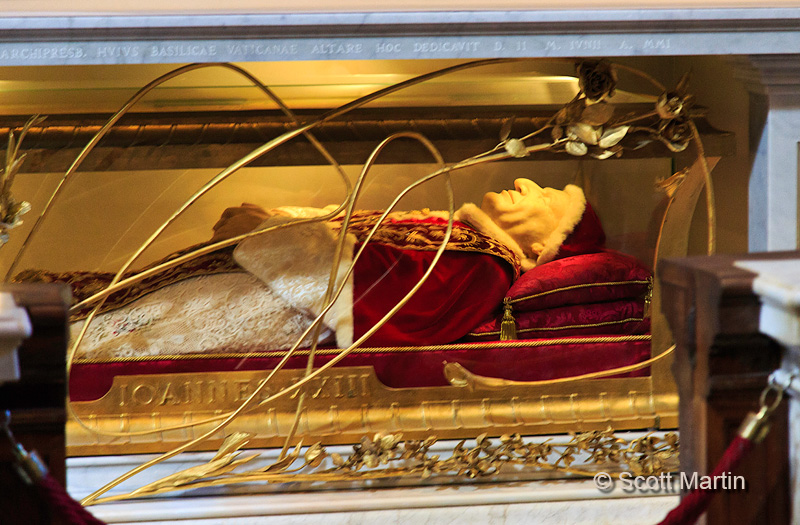
One of the most popular statues in the basilica is Michelangelo’s Pieta which was carved in 1498-1499 when Michelangelo was only 24. It is the only piece of art he ever signed.
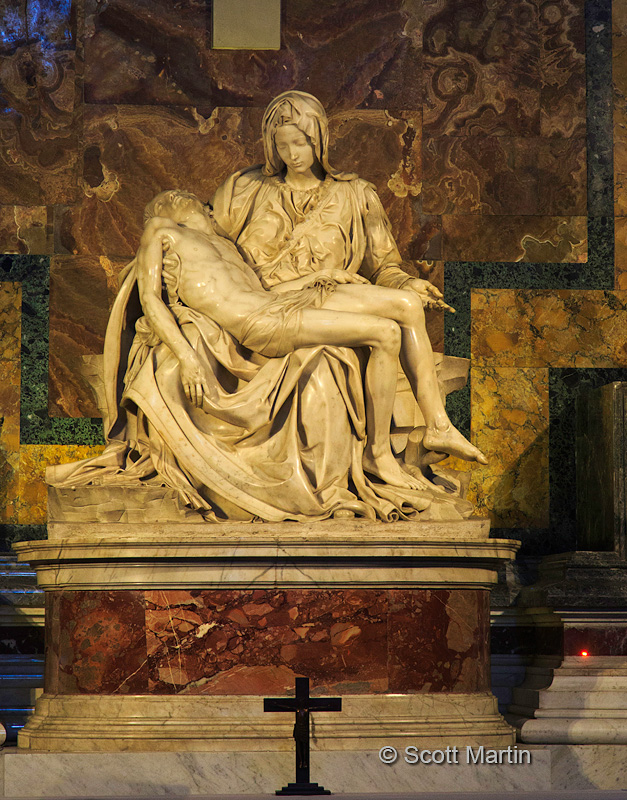
The dome above the Papal Altar is the highest dome in the world with the top of its external cross 450′ above the floor of the basilica and its internal diameter is just over 136′. This next image shows the dome from the inside looking up into the cupola.
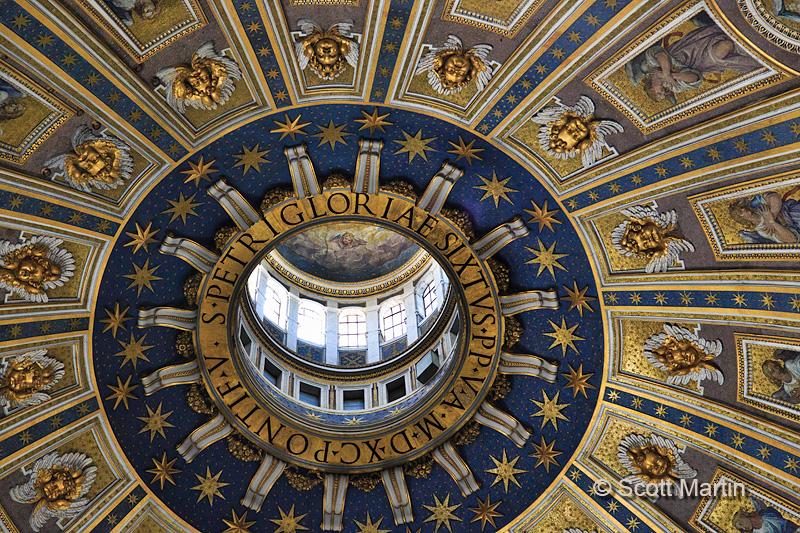
And from the top looking down into the basilica towards the Altar of St. Joseph, which is said to contain the relics of Simon and Jude in an ancient sarcophagus.
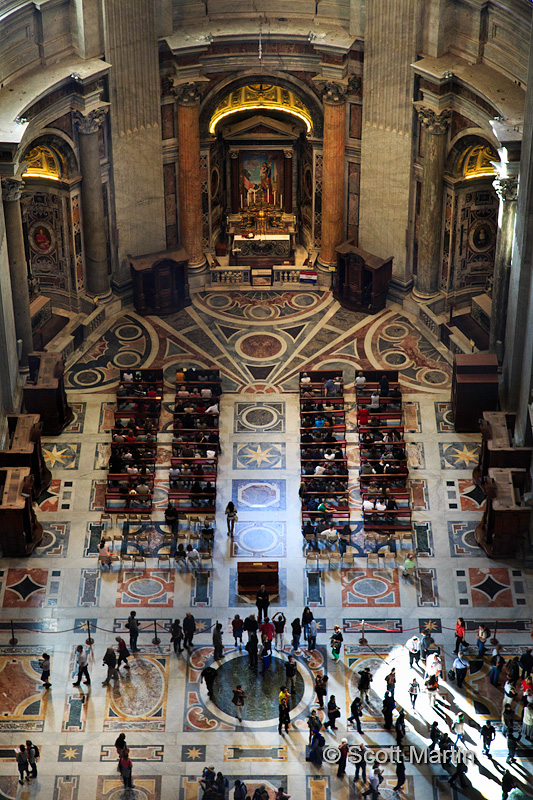
There is an extra fee required to visit the actual dome of St. Peter’s Basilica and then climb the more than 500 steps winding through the inner and outer dome shells, eventually arriving at an outside viewing area at the top of the cupola of the dome. The view from this vantage point is well worth the effort required to get there, although if claustrophobic it may prove a problematic journey.
Looking up towards the top of the dome from within the inner and outer walls.
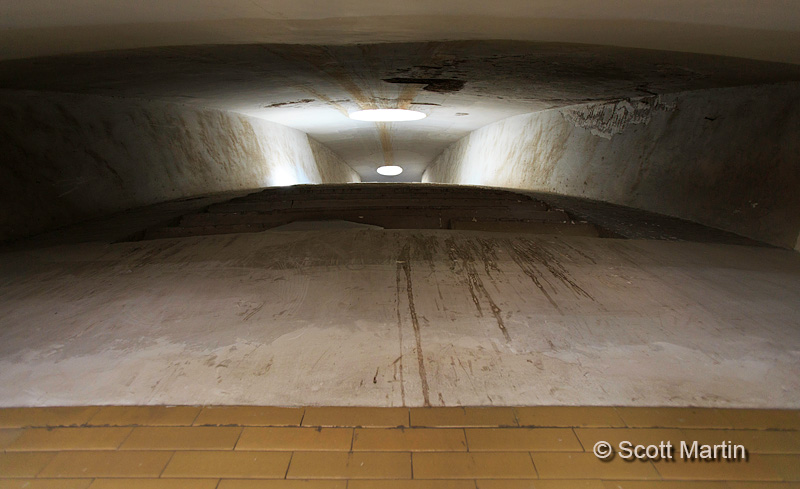
The dome as seen from the roof of the basilica. The viewing rail is at the base of the cupola on the top of the dome.
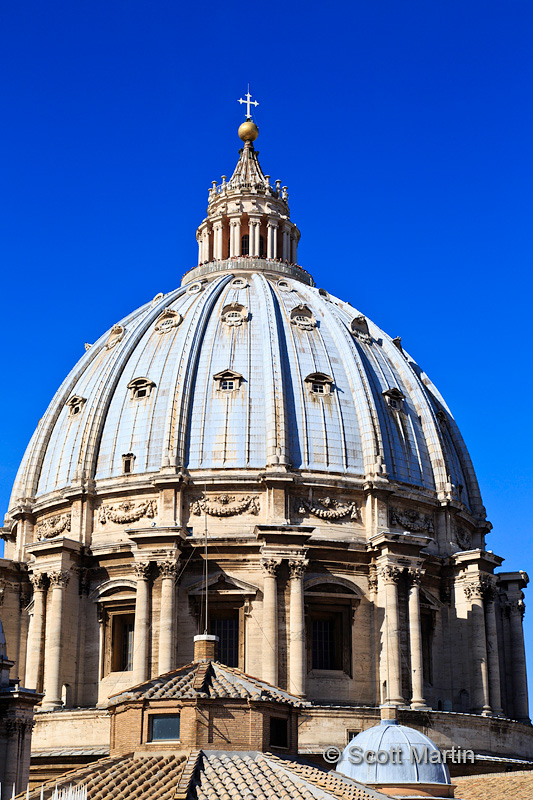
A closer view, which also provides some perspective as to the enormous size of the dome.
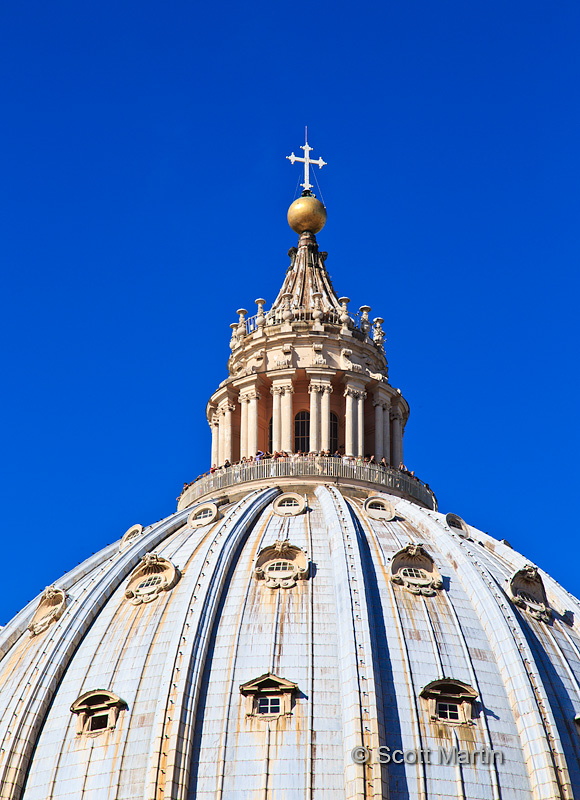
The spectacular view of St. Peter’s Square with its central obelisk and the surrounding Roman countryside as viewed from the top of the dome.
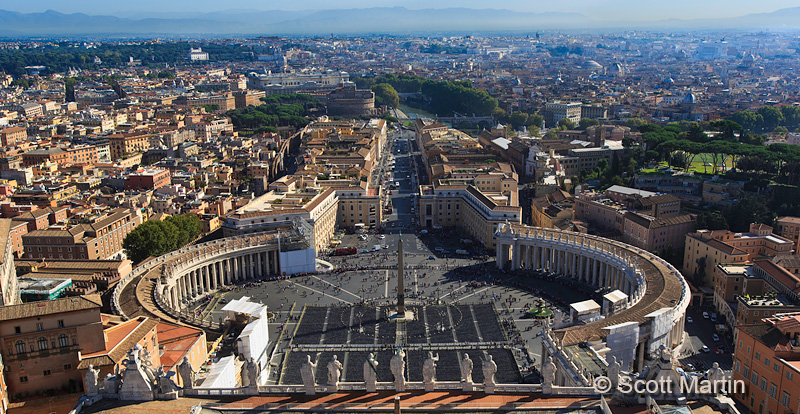
Across the top of the front facade of the basilica are thirteen travertine statues, the largest being Christ standing 19′ in height and flanked by John the Baptist and eleven apostles. Interestingly, the missing apostle is Peter.

Originally I had planned to do one post on the Vatican City however given the length of this blog entry it is probably best I stop at this point and continue on with the Vatican Museum and Sistine Chapel in another post.
Thank you for working your way through this post and I trust you’ve learned something new about the Vatican.


As a devout Catholic, this locale is on my list of places to visit during my life.
You have done an amazing job capturing everything from small, minute detail to the big picture from the top of the dome itself.
Well done and thank you for sharing your work.
I’m so happy you enjoyed the post Attila and I trust you are able to soon arrange a visit. It’s an incredible place.
Fantastic to see & read Scott. Interesting that I did not realise the scale of these and also the detail. Definitively on my list of things to do next year.
Thanks Rob, enjoy planning your trip for next year and plan to spend a full day in the Vatican.
The Vatican is certainly an intriguing place. This post reads like an official travelogue from the Vatican itself with the excellent narrative and the accompanying high quality images. Great job Scott!
Thanks Arni, yes, truly intriguing and the size of the basilica is impossible to exaggerate!